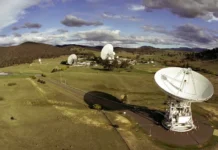Exploring the Universe’s Hidden Wonders through X-ray Observations
In the vast expanse of the universe, there are celestial phenomena that remain enigmatic and captivating. Among the most effective tools for unraveling these mysteries are X-ray observations. These high-energy light waves offer us a unique glimpse into the universe, allowing scientists to explore and understand the most extreme environments found in outer space. Unlike visible light, X-rays can penetrate through dense cosmic structures, unveiling secrets hidden within.
X-ray observations are particularly valuable when studying compact objects such as white dwarfs, neutron stars, and black holes. These celestial bodies are remnants of stars that have exhausted their nuclear fuel and collapsed under their own gravity. They are incredibly dense and possess conditions of pressure, temperature, and magnetic field strength that are far beyond anything we can replicate on Earth. As such, they serve as natural laboratories for physicists, providing insights into the fundamental laws of nature.
Understanding Compact Objects
White dwarfs, neutron stars, and black holes represent different endpoints in the life cycle of stars. Each of these objects has unique properties that make them fascinating subjects of study:
1. **White Dwarfs**: These are the remnants of stars like our sun. After exhausting their nuclear fuel, such stars shed their outer layers, leaving behind a hot, dense core that gradually cools over time. Observations of white dwarfs in X-rays can reveal information about their temperature and composition.
2. **Neutron Stars**: These are the collapsed cores of massive stars that have undergone supernova explosions. Neutron stars are incredibly dense, with a mass greater than that of the sun packed into a sphere only about 10 kilometers in diameter. The intense gravitational and magnetic fields of neutron stars create conditions that challenge our understanding of physics.
3. **Black Holes**: These are regions of space where gravity is so strong that nothing, not even light, can escape. While black holes themselves are invisible, their presence can be inferred through X-ray emissions from surrounding matter being pulled into them. Studying these emissions helps researchers understand the behavior of matter under extreme gravitational forces.
The Role of X-ray Observations in Modern Astrophysics
X-ray astronomy has revolutionized our understanding of the universe. By observing the high-energy phenomena associated with compact objects, scientists can test theories and models that describe the behavior of matter under extreme conditions. One area of particular interest is the study of neutron stars, where researchers are probing the neutron star equation of state. This equation describes how matter behaves at the incredibly high densities found in neutron stars and is crucial for understanding the fundamental properties of these objects.
Another significant area of research involves testing quantum electrodynamics (QED), a theory that describes how light and matter interact. Neutron stars provide a unique environment to test QED due to their intense magnetic fields, which are far stronger than anything we can create on Earth. By studying the atmospheres of neutron stars, scientists aim to confirm or refine our understanding of QED.
Innovative Optics at NASA’s Marshall Space Flight Center
At the forefront of X-ray astronomy is NASA’s Marshall Space Flight Center, where a dedicated team of scientists and engineers is developing cutting-edge optics technology. These innovative instruments are designed to enhance the resolution and sensitivity of X-ray telescopes, allowing for more precise observations of distant cosmic phenomena.
The development and refinement of such optics are critical for advancing our knowledge of the universe. By capturing clearer and more detailed X-ray images, researchers can gain deeper insights into the physical processes occurring in the most extreme environments. These advancements not only push the boundaries of current scientific understanding but also pave the way for future discoveries.
Broader Implications and Future Directions
The study of X-ray emissions from compact objects has far-reaching implications for both astrophysics and fundamental physics. As scientists continue to refine their models and theories, these observations could lead to breakthroughs in our understanding of the universe’s most fundamental forces and particles.
Moreover, X-ray astronomy is a rapidly evolving field, with new missions and technologies constantly being developed. Future X-ray observatories are expected to provide even more detailed insights into the behavior of celestial phenomena, potentially revealing new aspects of the universe that are currently beyond our comprehension.
In conclusion, X-ray observations offer an invaluable window into the universe’s most extreme and mysterious environments. By studying the high-energy emissions from compact objects like white dwarfs, neutron stars, and black holes, scientists are able to explore the fundamental laws of physics in ways that are not possible on Earth. As technology advances and our understanding deepens, the field of X-ray astronomy promises to continue uncovering the hidden wonders of the cosmos, enriching our knowledge and appreciation of the universe we inhabit.
For more Information, Refer to this article.


































